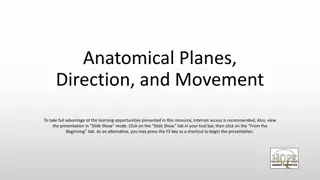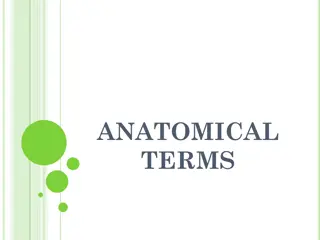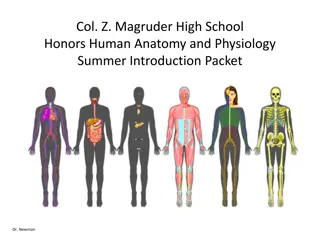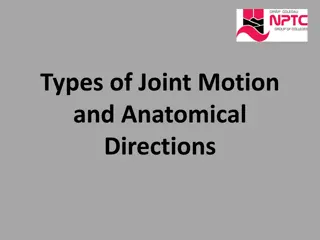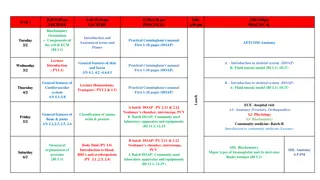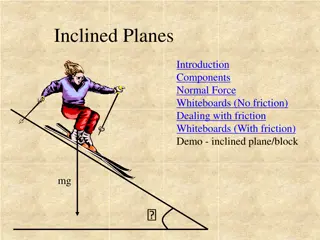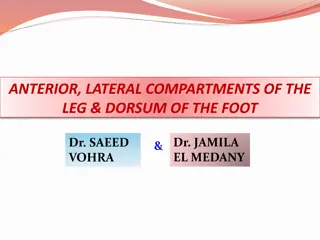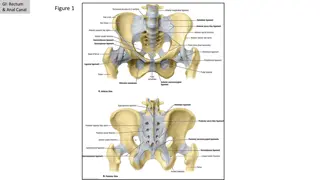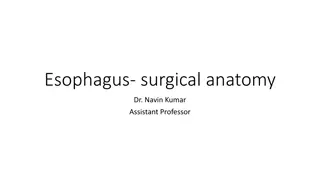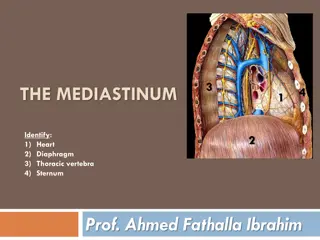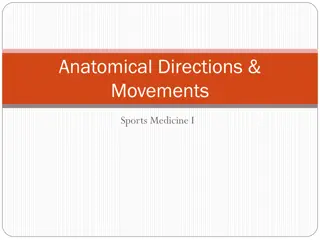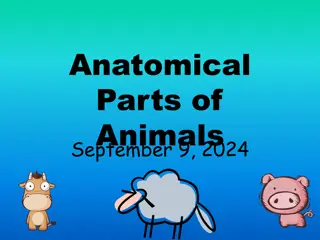Pre-Lecture Material for Gross Anatomy: TBS and Anatomical Planes
Understand the Typical Body Segment (TBS) concept, a transverse section through the human body, and the importance of anatomical planes for orienting and dividing the body into sagittal, coronal, and transverse sections. Prepare effectively for Gross Anatomy lectures by grasping these foundational concepts in anatomy.
Download Presentation

Please find below an Image/Link to download the presentation.
The content on the website is provided AS IS for your information and personal use only. It may not be sold, licensed, or shared on other websites without obtaining consent from the author. Download presentation by click this link. If you encounter any issues during the download, it is possible that the publisher has removed the file from their server.
E N D
Presentation Transcript
Pre-lecture material for Lecture 1 GA 2016: TBS and anatomical planes. Hi Everyone, TBL lexicon) for you to read before a lecture. Not every part of a TBL curriculum works in Gross Anatomy. But one thing that we know work is providing some pre-lecture summaries. This helps to prepare you for lecture so that we can all make use of our time in the amphitheater much more effectively. There are some simple concepts that are silly for me to repeat in front of you in lecture. It wastes your time to have me recite it. But you do need to know about these basic details before class. There are also often some over-arching ideas that would be good for you to have in mind before lecture. These tutorials cover, to varying degrees, big issues and basic facts you need to before we start. I hope you find these helpful. I will often provide pre-lecture material (called tutorials in the Sincerely, Daniel
The Typical Body Segment (The Typical BS; a Duke tradition) bone muscle In 1969 Matt Cartmill, a Duke Professor, and his colleagues came up with the idea of the Typical Body Segment (TBS), which represents an average transverse section (see next slide) through a human body. skin nerves Internal organs vessels The TBS contains all the relevant organ systems, tissue types, and physiological functions you will encounter. Obviously, in reality each segment of the body is different. To learn Gross Anatomy we start with the TBS and discuss deviations from that basic plan. Main point: The TBS is an integrated model for the body that connects anatomy, histology, and physiology. We can learn regional anatomy by studying deviations from the TBS in each region.
The Typical Body Segment (The Typical BS; a Duke tradition) The TBS is a transverse section cut perpendicular to the long axis of the body. You see this when you buy a salmon steak or look at a CT scan. dorsal Transverse section caudal ventral CT scans are flipped so dorsal is down. Feet are pointing out of the screen. A TYPICAL BODY SEGMENT
Anatomical position lets us orient regards of body position. Anatomical orientation: Standard anatomical position is when a person stands facing forward with the palms facing outward and the toes pointing forward or slightly askew. Anatomical position is the starting point for all orientation. You can divide the body into three planes; each perpendicular to each other. Those planes are called sagittal, coronal, and transverse. Those three planes can represent many sections, as you will see in the next slide.
There are three planes that we use to divide the human body. Planes: Sagittal Coronal Transverse (from Stern, 2003) The human body can be divided into multiple sections along the three planes.
We describe position in relative terms within the body. Once you know planes and orientation you can now consider different surfaces and levels of the body. To avoid confusion we use relative terms that designate the position of one structure relative to another. Relative Locations: Dorsal (posterior): toward the back Ventral (anterior): toward the front Cranial (superior): toward the head Caudal (inferior): toward the tail/feet Medial: close to the midline Lateral: further from the midline Proximal: on a limb; close to the midline Distal: on a limb; further from the midline We do talk about the dorsum or the ventrum or the dorsal and ventral surfaces. We also talk about the proximal or distal end of a bone. But when we are being precise we use these terms in a relative way that allows rapid and consist description in any setting and is especially valuable in a clinical setting. Here are examples: The heart is dorsal to the sternum. The vertebra is dorsal to the heart. The wrist is distal to the elbow. The nipple is lateral to the sternum. The heart is medial to the lung. etc. etc.


